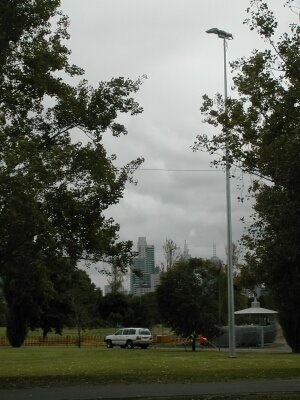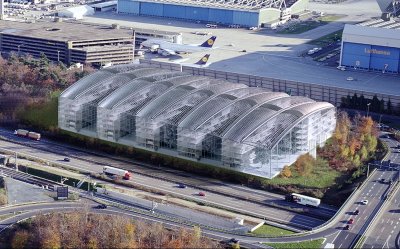Historic Metropolitan Meat Market, Melbourne

82% energy reduced Many such installations still use old-style mercury-vapour lights. Often called “watchman light”, they are fine if all you need is “some sort of brightness” and you do not care about energy consumption. However, their colour-rendering of Ra=60 is fairly poor and their efficacy is only 55-60 lumens/watt at the best of times. As these lights age, they provide less than 60% of their initial output ! With their bulbous shape and ugly control gear boxes, they are an eyesore and spread their light without much aiming. They also contain large amounts of mercury, a toxic heavy metal. The objective here was to get better light quality, AND better looks AND a reduced electricity bill for Melbourne City Council.  High time for a better solution : the old mercury-vapour lights and their gearboxes were an eyesore, consumed a lot of energy and produced poor lighting. Products used : * R1MiniS compact projectors * total consumption reduced by >82% Equipped with G12-based ceramic metal-halide lamps (efficacy ~100lm/watt), these extremely compact fittings produce excellent light with a 1A colour-rendering of Ra>90 at low electricity consumption. High quality reflectors in the heavy- duty die-cast aluminium housings allow for precise aiming. The wide range of accessories (color filters, baffles etc.) suit the most difficult lighting tasks. Various sculpture- and spread-lenses permit the precise illumination of public works of art, facade and feature lighting. In this particular project, we aren´t exactly happy with the location and positioning of our lights. Unfortunately, this is very often beyond our control. Each outdated “watchman light” with 400W was replaced by a single 70W R1MiniS projector (35W and 150W versions also available). Integrated control gear means that the already cluttered streetpoles now look much less messy. R1MiniS are IP65 watertight rated and have high-end features like pressure equalisation valves, various optical lenses, beam spreads and 3rd generation control gear. They are ideal for longlasting permanent outdoor applications.  Customer : Melbourne City Council Lighting Designers : WEBB Australia Photography : Jee Wee Ong Related links : 3AW DeBortoli Pub of the Year Victorian State Craft Collection VIC government press release State Library of Victoria |
















